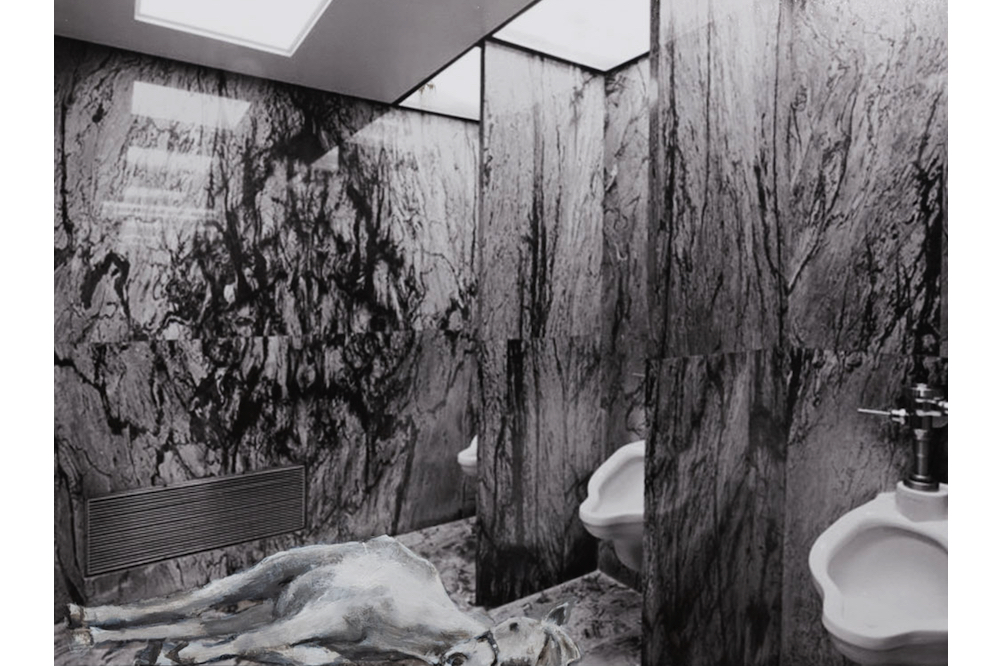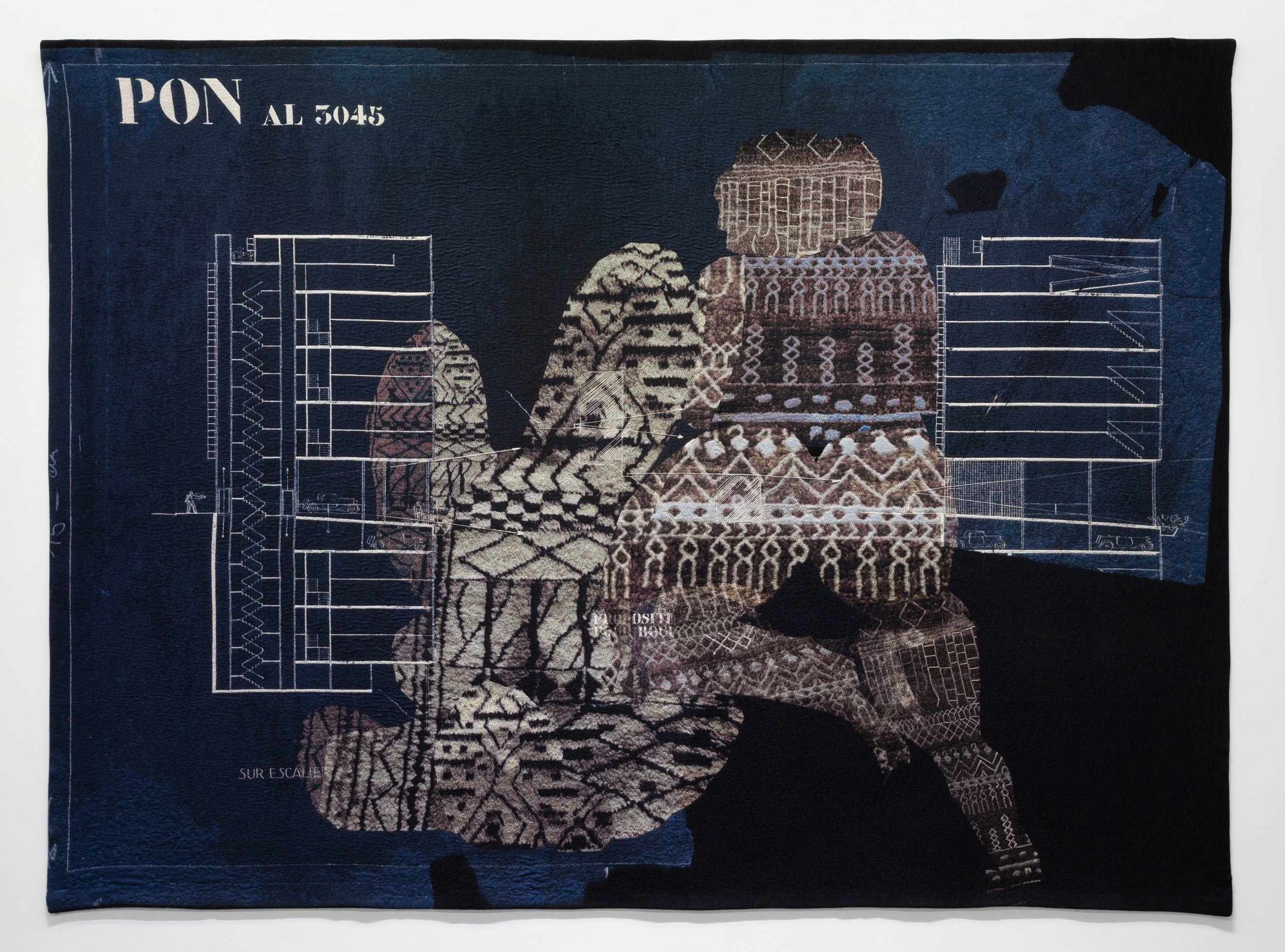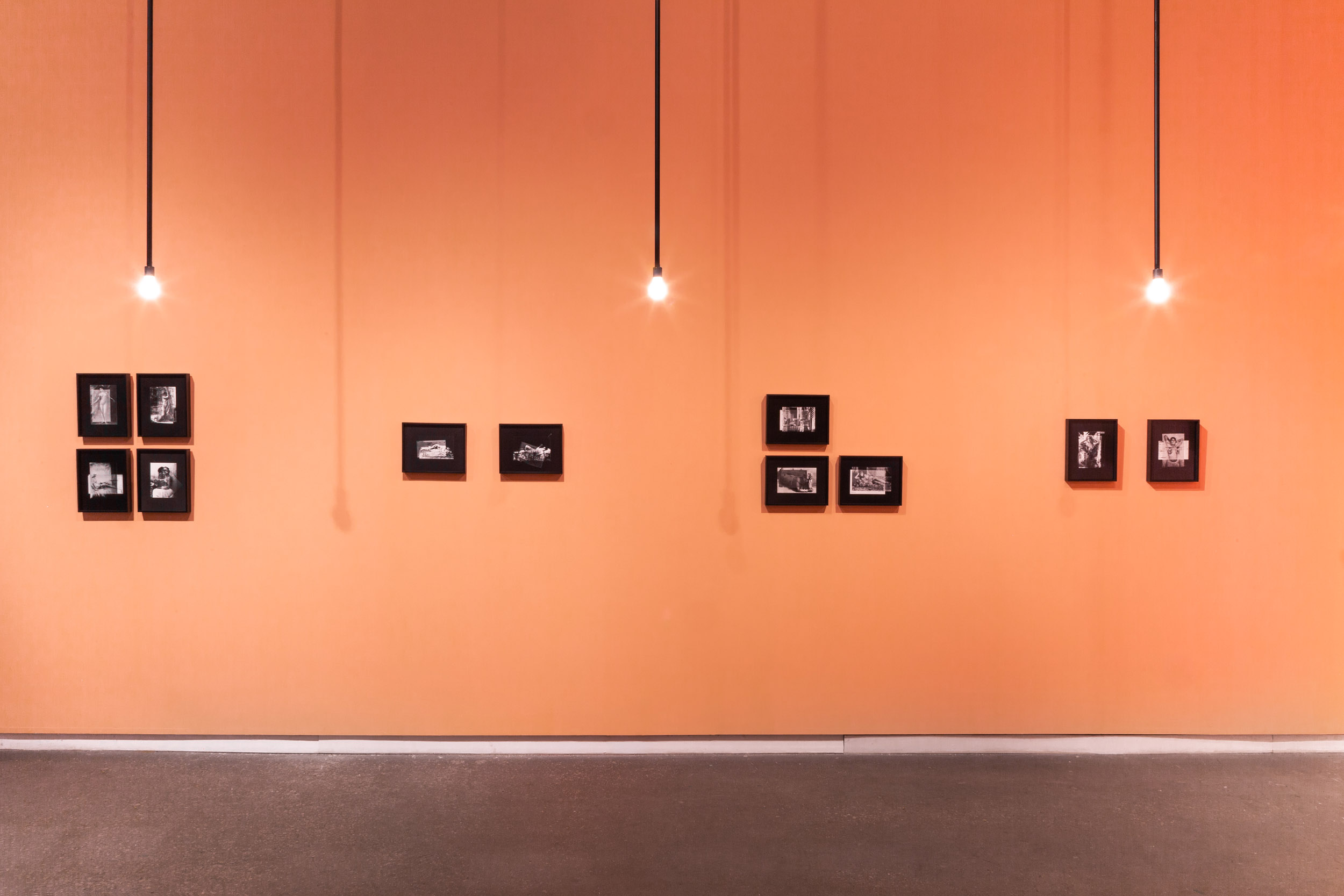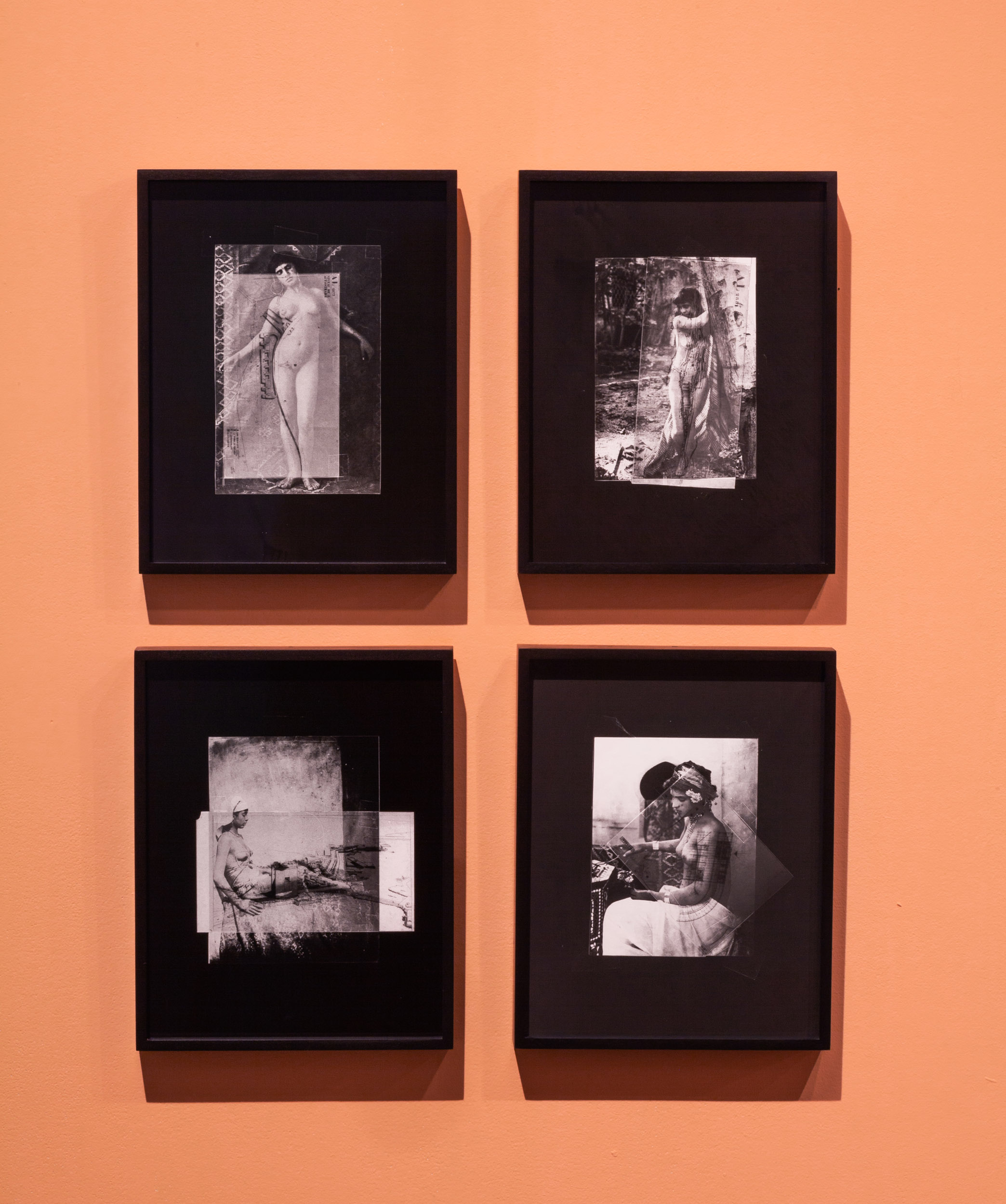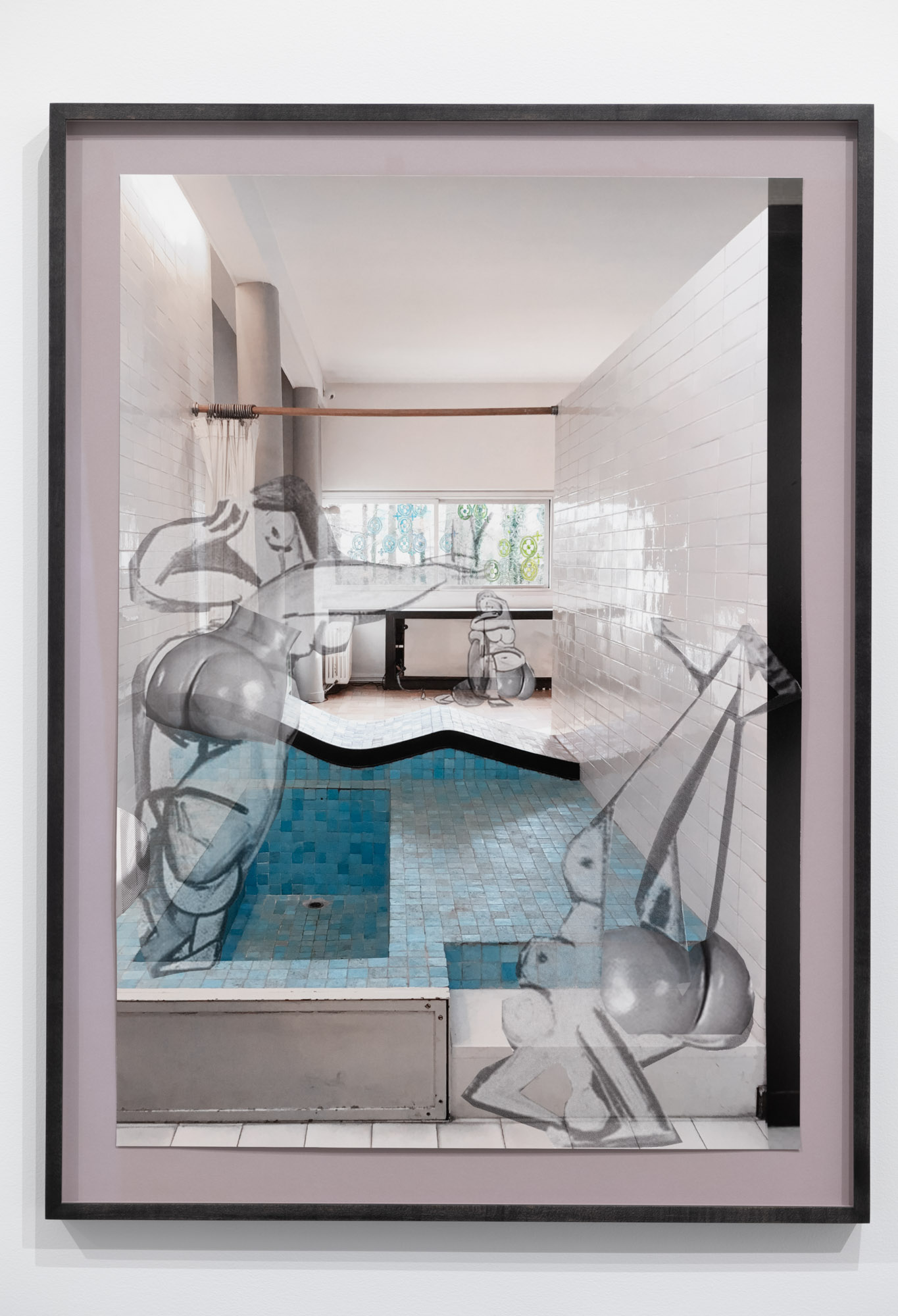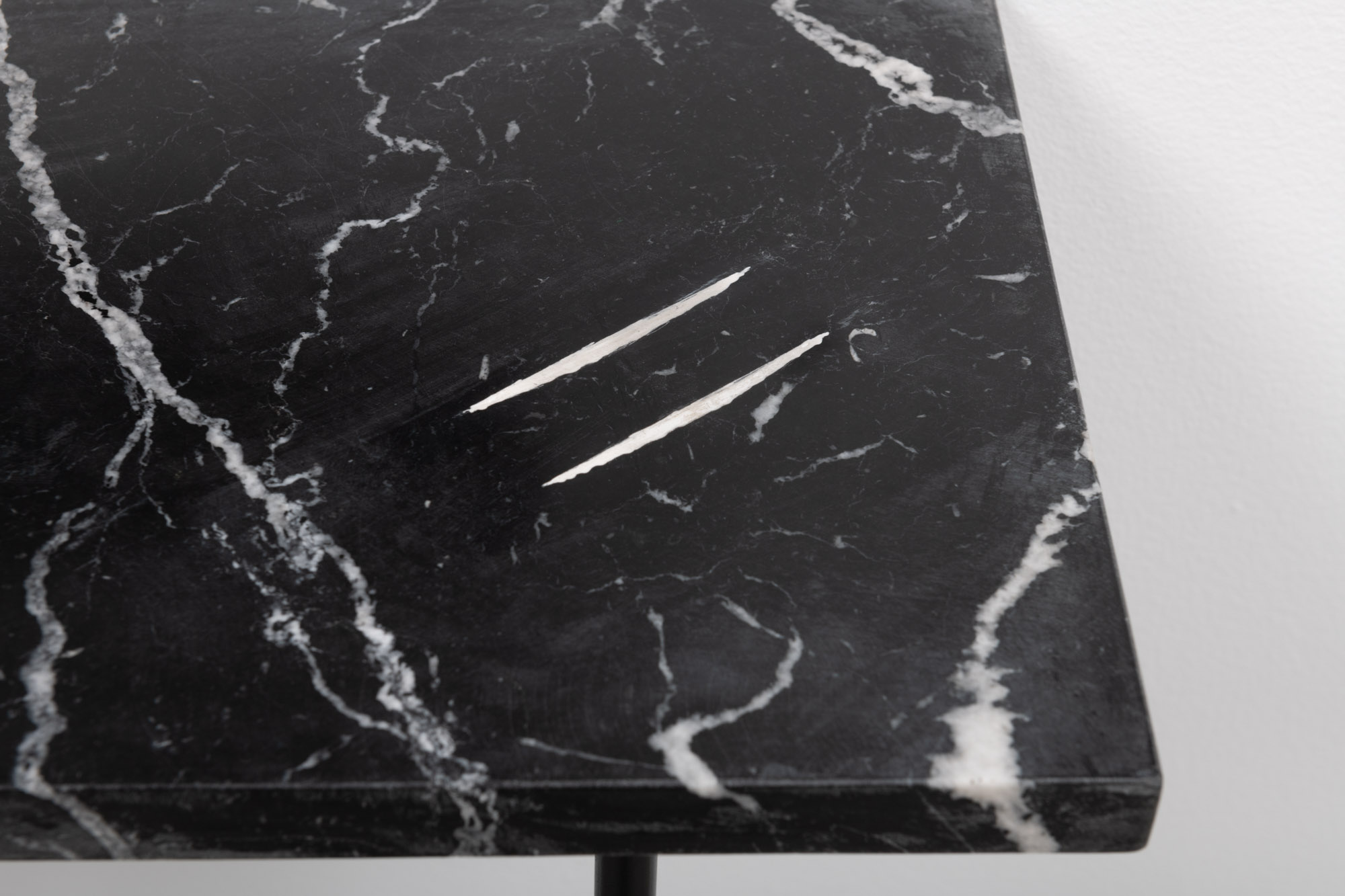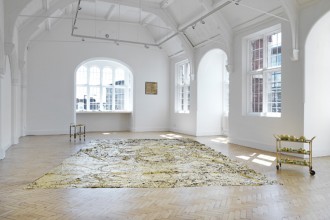The symbolism of ornament has long founded Shannon Bool’s practice, and that’s lucky. It’s lucky that something so alluring could be both legitimating and indulgent; that those very flourishes that ground our desire would also underwrite Bool’s meaning. Her repeated directions – to observe shifts in perspective, to reorient our histories, to parse comment from surface – take place in rooms that do not want for pleasure. A sweeping expanse of tapestry, a dimpled bench of marble, a bronze-cast charm, a spotlit print: these forms carry narratives that deepen the seat of our ardor, and complicate our thirst.
Bool’s solo exhibition Bomb.Shell at Toronto’s Daniel Faria Gallery, evolves her line of inquiry, while sacrificing none of its aesthetic avidity. Rallying around several tracks of Modernism, including the early twentieth century’s appropriation, colonialization, and exoticization of North Africa; and the enduring “better-living” fantasias of Modernist architect Le Corbusier, Bool positions us between what has been inherited and what can be revised. In his sharply-observed exhibition text, critic and art historian Tammer El Sheikh writes, “Modernism is promiscuous, passing quietly between artists, writers, and cultural traditions. Shannon Bool’s critical re-imagination of it in Bomb. Shell. shines a light on these transactions, and the limiting role of women within them.” Playing with figures including Picasso, André Malraux, and Le Corbusier, and with “a deft sensitivity to formal echoes between objectified bodies and colonized land,” Bool overlays “avatars of Le Corbusier’s sketched Moorish women mingled with excerpts from his urban designs. The integration of French and Muslim subjects in this exhibition has a charged subtext in our era of debates about reasonable accommodation, but Bool’s vision is more phantasmal than journalistic.” Taking Le Corbusier’s utopian plans for Algiers, titled Plan Obus (which means “shell”), Bool tacks back to a successful strategy in her practice, creating a desire-bound palimpsest.
Continuing the artist’s material leitmotif of producing large tapestries, Oued Ouchaia and Maison Locative Ponsik (all works 2018) superimpose Le Corbusier’s “best-laid plans” with splayed limbs, featuring the women who backgrounded his colonial ambitions. Tumid, towering, and freed from their odalisque to overwhelm a drafted city, Bool foregrounds the muse while underscoring her fantasy.
In a softly-hued back gallery, painted and lit after Le Corbusier’s design for the Villa La Roche, the master’s architectural plans limn and trace European postcards of Algerian women. Part of the pleasure of Bool’s work lies in its sensuousness – and the feeling that she’s having fun. A luxurious suite of photo collages unfurls, in which the lines of a woman’s body marry to curving barricades against the sea. Bool illuminates the objecthood of her subject’s fantasies while giving us a taste of his vision.
When Le Corbusier set his sights on Algiers, he had already become disillusioned with the “machine-age ideology” and “stylistic echo chamber” of his Modernism. disenchanted in the face of the market crash of 1929, and the rise of Fascism and Nazism. Writes Brian Ackley, in a Bidoun essay titled “Le Corbusier’s Algerian Fantasy,” “He began searching for new forms of inspiration […], looking to nature, vernacular architecture, and women for inspiration. While mining these spaces of difference, his impulses and thinking shifted away from angular brutalism toward the more plastic and poetic forms of his later work.” However Bool risks a flattening condemnation in this series: her quality of aesthetic play might partake in the very objectification she upbraids. I think of Albert Camus’s essay “Summers in Algiers,” in which he indulges himself in a wistful appraisal of the coastline’s youth and unfettered nudity – all those brown bodies in that baking heat! – writing, “How can one fail to participate in that dialogue of stone and flesh in tune with the sun and seasons?”
Bool seems to be asking this, too, however knowingly. But she elevates and complicates her narrative treatment of these received tropes in a final suite of works that shimmer with absurdity while hanging heavy with their hauntings. Women in their Apartment features a collage of photography and drawing, stationing Kim Kardashian’s most memorable asset (rendered repeatedly in a Cubist, or Moorish, shorthand) within a tiled bathroom from Le Corbusier’s iconic Villa Savoye. Beneath this “women bathing” is a sculptural touch ringing with Bool’s trademark legerdemain: a thin, marble-veined, and spindly-legged countertop that holds two conspicuous powdery lines. Sugar Veins is a nod to a trompe-l’oeil moment in Kardashian’s Instagram history, which erupted into a conspiracy theory and required her correction (“it’s just a marble top! C’mon guys, I don’t play like that,” she assured, while wreathing herself in imaginary emoji-flowers).
In a neighboring image, my favorite of the show, Bool lays a white horse across the Seagram Building’s marbled bathroom floor, two urinals crowning above him. Titled Little Hans, it nods to Freud’s iconic case of castration anxiety, with his 4-year old patient-by-proxy being described as worrying “a horse will bite him in the street,” and this fear being “somehow connected with his having been frightened by a large penis.” The horse, now dead, anchors the building’s towering ode to high Modernism. Bool seems to suggest that a kind of castration is in the offing. In Bomb. Shell, it’s her women who tower, who linger, and not their men. Bool has traced Modernism’s nautilus and found, folded within its ornament, a deeper meaning.

